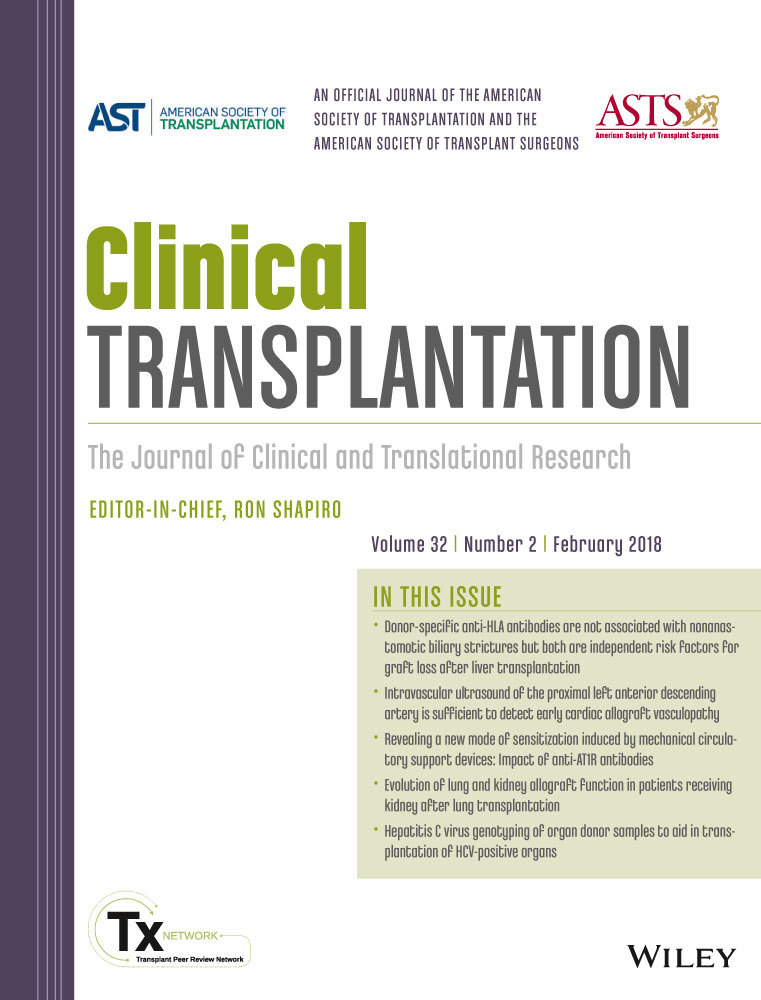Electronic messaging and communication with living kidney donors
Abstract
New regulations require living kidney donor (LKD) follow-up for 2 years, but donor retention remains poor. Electronic communication (eg, text messaging and e-mail) might improve donor retention. To explore the possible impact of electronic communication, we recruited LKDs to participate in an exploratory study of communication via telephone, e-mail, or text messaging postdonation; communication through this study was purely optional and did not replace standard follow-up. Of 69 LKDs recruited, 3% requested telephone call, 52% e-mail, and 45% text messaging. Telephone response rate was 0%; these LKDs were subsequently excluded from analysis. Overall response rates with e-mail or text messaging at 1 week, 1 month, 6 months, 1 year, and 2 years were 94%, 87%, 81%, 72%, and 72%. Lower response rates were seen in African Americans, even after adjusting for age, sex, and contact method (incidence rate ratio (IRR) nonresponse 2.075.8116.36, P = .001). Text messaging had higher response rates than e-mail (IRR nonresponse 0.110.280.71, P = .007). Rates of nonresponse were similar by sex (IRR 0.68, P = .4) and age (IRR 1.00, P > .9). In summary, LKDs strongly preferred electronic messaging over telephone and were highly responsive 2 years postdonation, even in this nonrequired, nonincentivized exploratory research study. These electronic communication tools can be automated and may improve regulatory compliance and postdonation care.
CONFLICT OF INTEREST
None.




